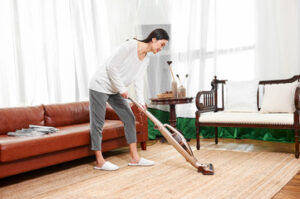In November 1981 Natalie Wood, star of such movies as Miracle on 34th Street and Rebel Without a Cause, drowned in the ocean off Catalina Island. She was 43 years old.

In 2011 the Los Angeles County Sheriff’s Department reopened the case after Dennis Davern, the captain of the yacht Splendour, wrote his own book claiming that he heard Wagner and Wood arguing before she disappeared. In 2018, sheriff’s investigators reclassified her death as suspicious and named Wagner, now 90, a person of interest. Keep reading the article below to learn more about Natalie Wood Death.
As Natalie Wood fans know, the enigmatic actress died at the peak of her movie-star career in a baffling mystery that’s never been satisfactorily explained. The film explores her storied life and her troubled death through the words of her friends and family, clips, personal home movies and photographs, and interviews with people who worked with her or knew her in a more personal capacity.
The story starts with a little background on the young girl who was born Natalia Nikolaevna Zakharenko and became Natalie Wood thanks to Hollywood and a quick marriage. There’s also a look at her rebelliousness against the studio system and Jack Warner, and an interesting discussion of the way in which she forged her own path by choosing her own projects.
Much of the movie is a love story to the memory of Natalie, a warm and loving person who was also strong-willed and determined. The stories of the bonds that held her family together, as well as her extended circle of friends, are touching and inspiring. And there are some great photos of the actress, particularly one from the ’60s in which she stares right into the camera with that confident grin of hers.
At the end, though, we come to the inescapable subject of the night she went overboard. The boat captain, Robert Wagner, and her friend and co-star Christopher Walken offer their versions of what happened. Wagner speaks in soft, caressing tones about his relationship with Wood, and he’s obviously sorry for what happened at the end of their weekend on the yacht.
But he offers no explanation for why, according to him and others, she went in the water at night and drowned. He says she had a fear of “dark water” because her mother told her as a youngster that she would die by drowning. That’s not an explanation at all, and it makes no sense.
Even more confusing is the fact that the captain’s wife and some of his other witnesses say she went in the water because she was scared and didn’t want to go back onto the boat. There’s also the possibility that she slipped and fell into the water from the inflatable dinghy she was trying to get into.
The Power of Words
In the era of Hollywood superstars, few were bigger than Natalie Wood. Nominated for three Oscars and a Golden Globe, the actress wowed audiences with her performances in iconic movies like Miracle on 34th Street, Rebel Without a Cause, and Gypsy. But off the screen, her life was a bit more complicated.
On a November 29th, 1981, the body of Wood was found floating face down in the Pacific Ocean off the coast of California’s Catalina Island. She was wearing a flannel nightgown, blue wool socks, and a red down jacket. An inflatable rubber dingy from her yacht, Splendour, was nearby. What happened to the beloved star has never been fully explained.
Twenty-eight years after her death, a new documentary has reignited conversations about the circumstances surrounding it. The film, titled Natalie Wood: What Remains Behind, features interviews with the late actress’s daughter and stepfather. The latter, Natasha Gregson Wagner, confronts her father, Robert Wagner, over speculation that he might have something to do with her mother’s untimely end.
The day of Wood’s death, she and Wagner had invited Christopher Walken to join them on a dinner cruise aboard the boat. After a few drinks, the four people returned to their staterooms. According to investigators, at some point, Wagner and Walken got into a fight over Wood. When the argument ended, the captain of the boat, Dennis Davern, said he heard Wagner say to Walken “I’m going to kill her.”
A few hours later, a call was received at the marina reporting that someone had gone overboard from the yacht. The rescue team went out and found the dinghy in the water. The next morning, Wood’s body washed up on the beach.
The investigation into Wood’s death has been long and drawn out, but new information has emerged that is disturbing. The Los Angeles County Sheriff’s Department has reopened the case, and a newly released autopsy report revealed fresh bruises on her arms and knee, a swollen foot, and a cut on her forehead. The coroner also ruled that the injuries could have been caused by an assault.
The Final Words
In the days before Natalie Wood died in 1981 at age 43, the famed actress known for her roles in West Side Story and Rebel Without a Cause had dinner with her Brainstorm costar Christopher Walken. At some point, an argument reportedly broke out between the actors. Hours afterward, she was found dead in the water off Catalina Island. It was ruled an accident, but the Los Angeles County Sheriff’s Department recently reopened the case and named Wagner, who was her husband at the time of her death, a person of interest.
The late actress was a frequent boater, often joining her friends Dennis Hopper and Tab Hunter for weekends and holidays on their own yacht. She also sailed with fellow actor Robert Wagner, who was eight years her senior. Despite their age difference, the two began dating and ultimately got married in 1957. Their marriage was tumultuous, but Natalie continued to act and appeared in over 50 films before her untimely death in 1981.
After her death, many pointed fingers at her husband, who was 91 at the time. His version of events didn’t seem to line up with the circumstances of her drowning, and his accounts of what happened on the night of her death didn’t always add up. The bruises that were found on her body didn’t appear to be fresh, and she struggled to pull herself into a rubber dinghy, which had scratch marks.
But it’s not just Wood’s daughter that thinks her husband has something to hide. Her younger sister Lana is convinced he’s responsible for her sister’s death and has never been able to shake her conviction that he committed murder.
In a new documentary, Lana digs into her mother’s life and death with a host of interviews from those close to her, including her widower, who has consistently denied any involvement in her sister’s death. The documentary also includes a stunning new witness who says that one night, she was so afraid of Wagner’s violent rage that she ran to her neighbor’s house, knocking on the door and screaming that he was going to kill her.
The Power of Love
The Power of Love is a curious thing. It can make one man weep and another sing, change a hawk into a little white dove, and bring inanimate objects to life. It is also a Deus ex Machina in many films, used to solve all manner of problems and reunite lovers after years apart. It’s also a deadly force that can cause great harm, as shown in the case of Natalie Wood.
Wood was an Academy Award-nominated actress who had grown into a serious, mature onscreen presence, moving beyond the hurdles of child stardom to become a leading lady in the silver screen’s most classic and beloved movies, including Miracle on 34th Street, Rebel Without a Cause, West Side Story, and Gypsy. Her career was not without its high points, but it was one that was largely defined by a series of personal tragedies.
In the aftermath of her death, speculation about what had gone wrong between her and Wagner ran rampant. The couple had invited several friends on board their yacht, Splendour, but most declined due to the less-than-ideal sailing weather. Only her Brainstorm co-star Christopher Walken accepted, and the pair had a romantic weekend together on the island.
By 2011, 30 years after Wood’s death, sheriff’s officials reopened the investigation and county coroners changed her cause of death from accidental drowning to “drowning and other undetermined factors.” In 2013, a new autopsy revealed fresh bruises on her arms and knee—in addition to scrapes on her neck and face—that could have been inflicted before she died.
It was at this time that Lana Wood wrote her memoir, You Must Remember This. Although she didn’t want to be negative about her sister, she wanted to tell the truth about the troubled marriage and the problems with her sister-in-law. She would later say that she did not write the book to bring down her brother-in-law, but simply to set the record straight.
Jennifer Rush, a German-born singer and songwriter, released the song “Power of Love” in 1985, and it became a hit in Europe and reached #1 on the Billboard Hot 100. The next year, American singer Laura Branigan took a crack at it and her version peaked at #26 on the chart.


